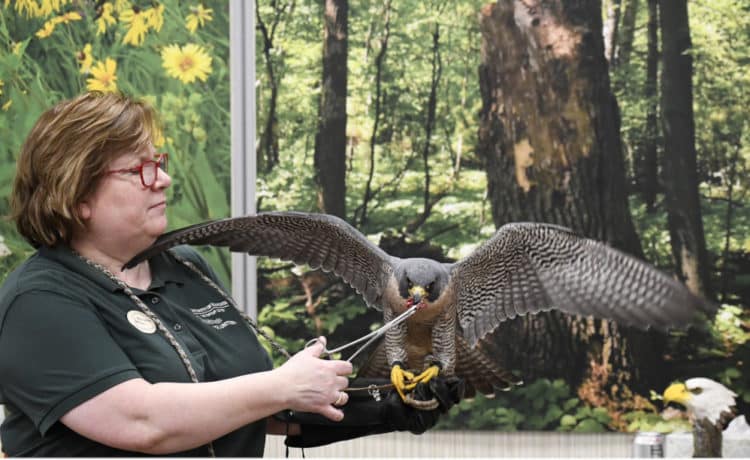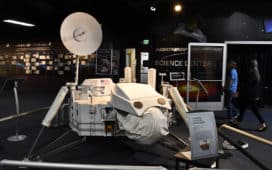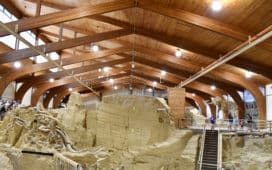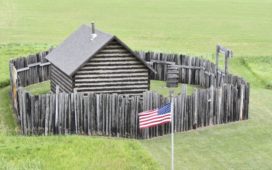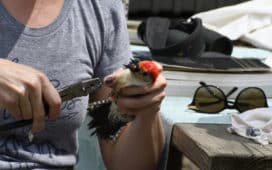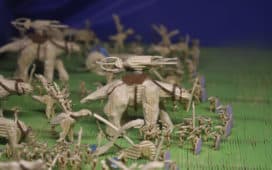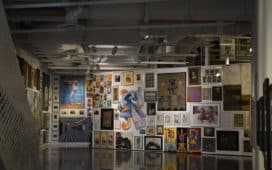Did you know that there is a teaching hospital in Minnesota that sees around 1,000 raptors that are sick or injured each year? The Raptor Center at the University of Minnesota College of Veterinary Medicine, trains veterinary students and veterinarians from around the world in raptor medicine and conservation, while reaching approximately 150,000 people annually through its outreach programs.
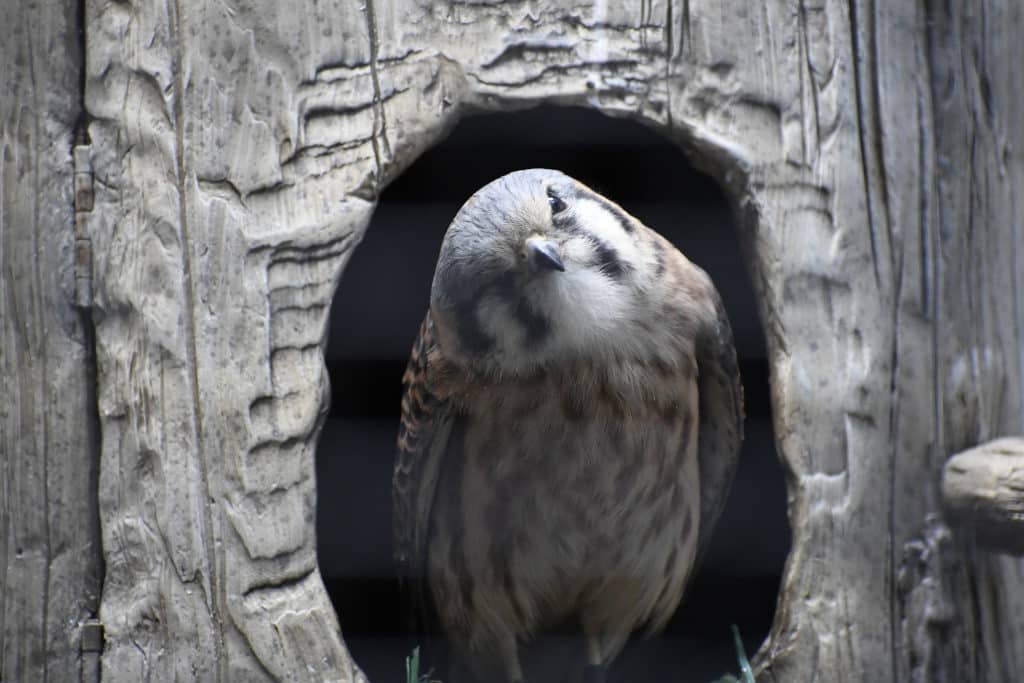
Touring the Center
Tours are available every 30 minutes during the week; the cost is $5 for adults and $3 for kids 3-17. On Saturday and Sunday at 1:00 PM, they offer the Weekend Raptors of Minnesota Program (We HIGHLY recommend you attend this program.)
When planning your trip, remember that they are open most days, excluding most University of Minnesota holidays, July 4th and Mondays (Pretty sure that birds don’t like Mondays…)

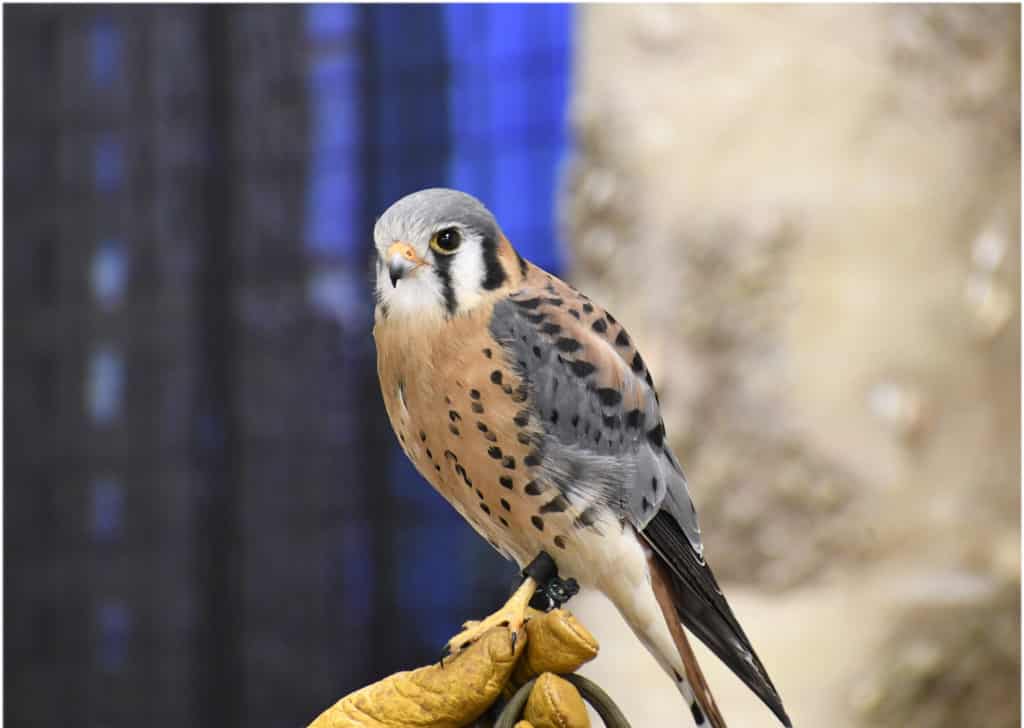
What is a raptor?
Our educator, Margaret, started the program by asking the audience a simple question: What is a raptor? The answers were varied with no one getting them correct. We learned that there are three specific criteria that all raptors have:
- Hooked beak – Beak is sharp, curved and made for cutting up pieces
- Excellent eyesight – See more colors, owls have excellent night vision
- Sharp talons – Used to catch, hold, carry and kill prey.
Fun note: Most raptors have three toes pointing forward and one backward, the Osprey has two forward and two backward. This allows them to hold fish more effectively. Their feet also have spiny scales that help with squirming fish!
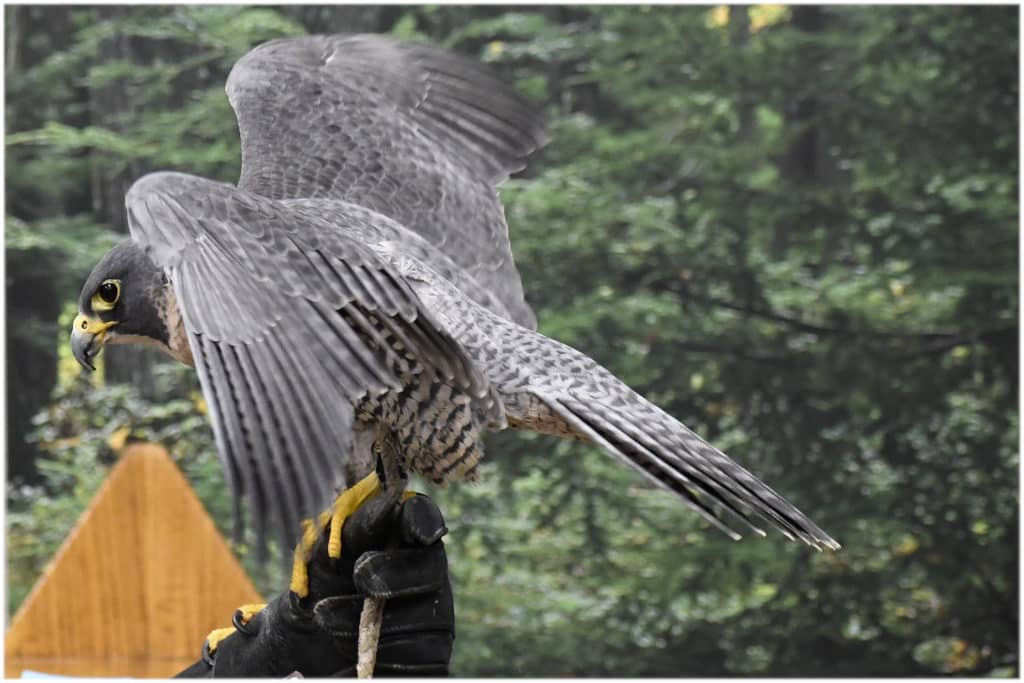
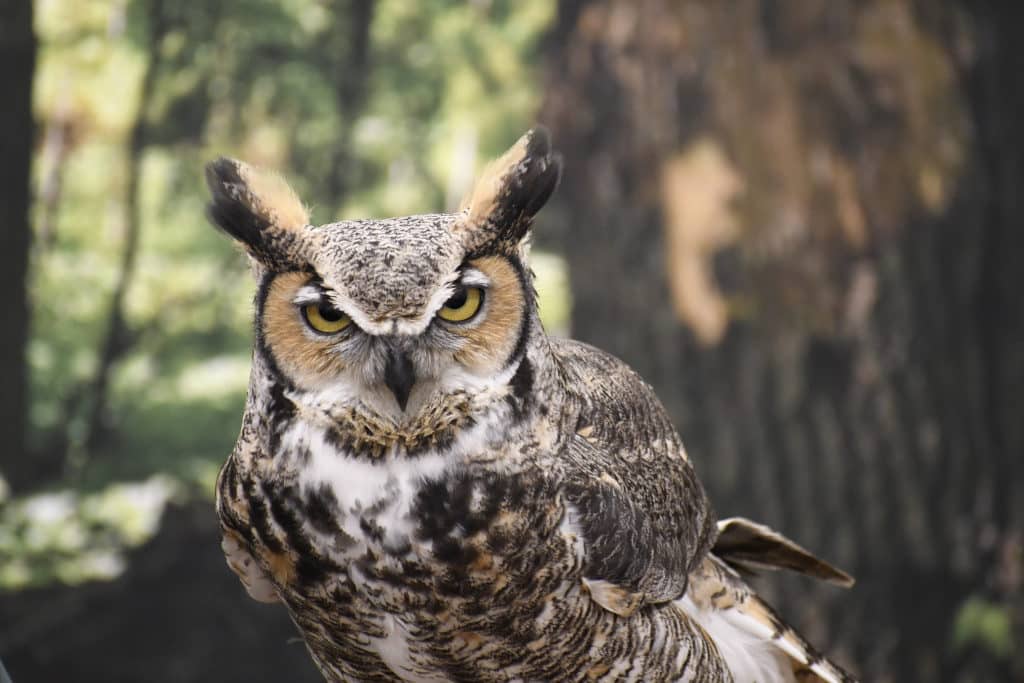
Meeting the winged ambassadors
After learning about raptors and going over a safety brief on the birds (I.E., IF you need to leave the program, let the educator know before you get up so she can prepare with the bird. Some of the birds are not fans of sudden movements.), we had the opportunity to meet three of the centers winged ambassadors.
- Artemis is a retired Peregrine falcon who has been working with The Raptor Center’s education department since 2004. She was retired early due to being insufficient at hunting.
- Malar is an American kestrel, which is the smallest of North America’s falcons. What he lacks in size, he makes up with in personality.
- Bubo is a Great horned owl that became unreleasable as young owl due to a well-meaning couple that fed him for two weeks after his nest blew down in a windstorm. During that short time, he had been imprinted by humans.
TIP: If you ever find a baby raptor that you suspect may need help, here is some important information:
- Do not pick up the youngster. Please call TRC if you are in our area (612-624-4745), or if not, call your state natural resource department or local rehabilitator for consultation.
- Do not feed any raptors, youngsters or adults.
Learn more: Help Baby Raptors
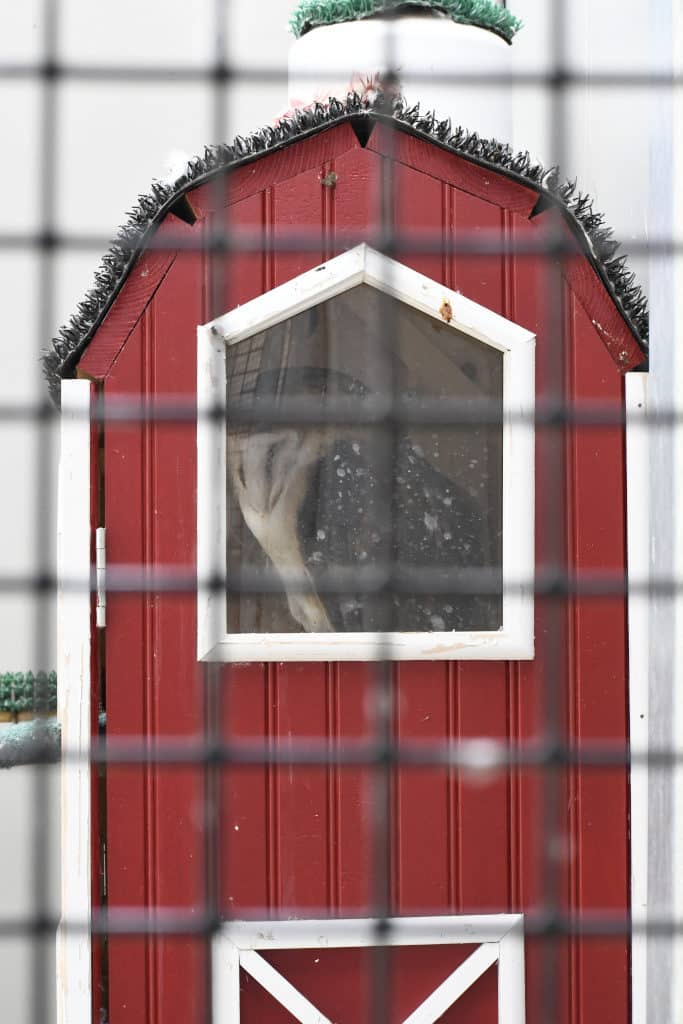
Trip booklets
As part of our pre-trip planning, we create booklets that the kids use to learn more about our destination and to start learning about the location before we arrive. They will generally include images from the site, a list of questions that the kids look up the answers to, and a section where they can write their own questions to ask during the visits.
During our trip to the Raptor Center, we had multiple groups ask about getting copies of the booklets our team had. To help other parents/groups, the booklets are available in the individual articles and on our Resources page.
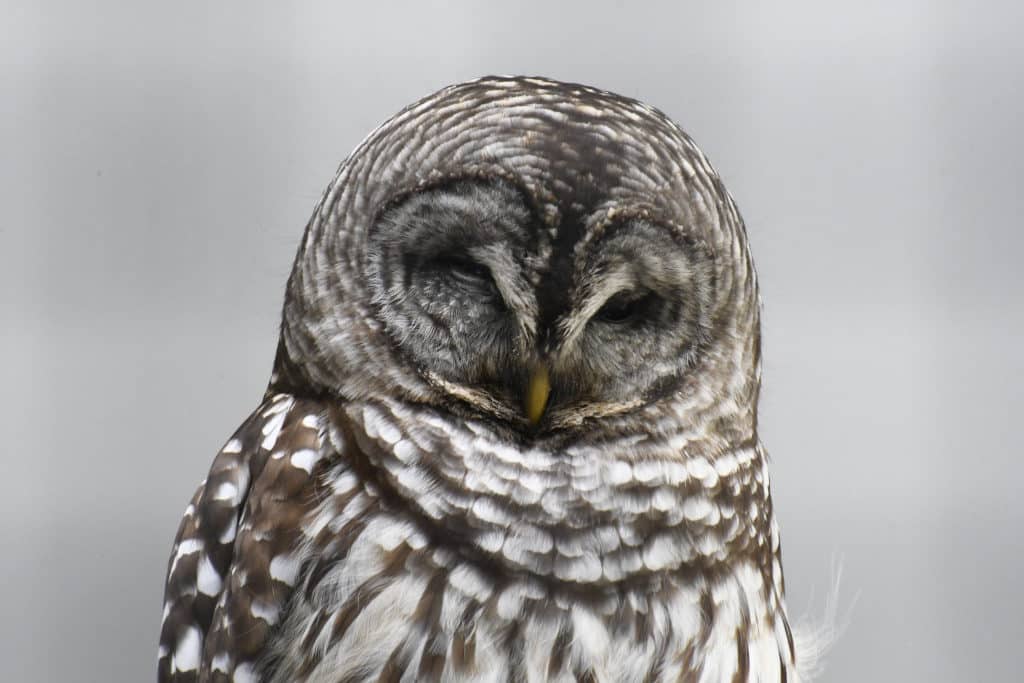
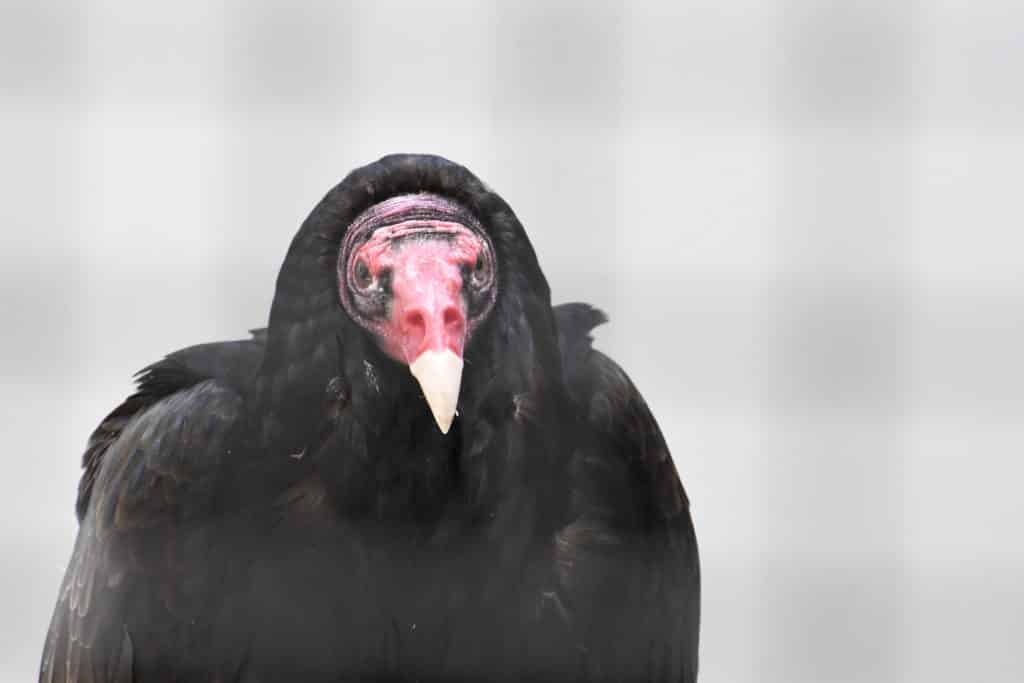
Help support The Raptor Center
TRC needs your ongoing financial support to continue its important mission. When you donate to the center, you are making a direct impact. According to the center, your donations help provide:
- Care and treatment of more than 1,000 sick and injured raptors each year
- Raptor education programs for thousands of children and adults nationwide
- Specialized training for veterinarians in raptor medicine, surgery, and rehabilitation
- Ongoing research and conservation efforts on behalf of avian species
Ways to give
Unlike some wildlife centers, there are no memberships available. There are many options for you to assist though, including;
- Donate – Become a Friend of The Raptor Center
- Matching gifts – Employer matching gift programs
- Planned giving – Charitable estate and income tax planning (call Ellen Orndorf, development officer, 612-624-8457)
- Tribute gifts – Celebrate or honor family members, friends, associates, volunteers
- Corporate gifts – Corporate sponsorship opportunities
Fun Fact: The Raptor Center depends on public support for 60% of their annual budget.
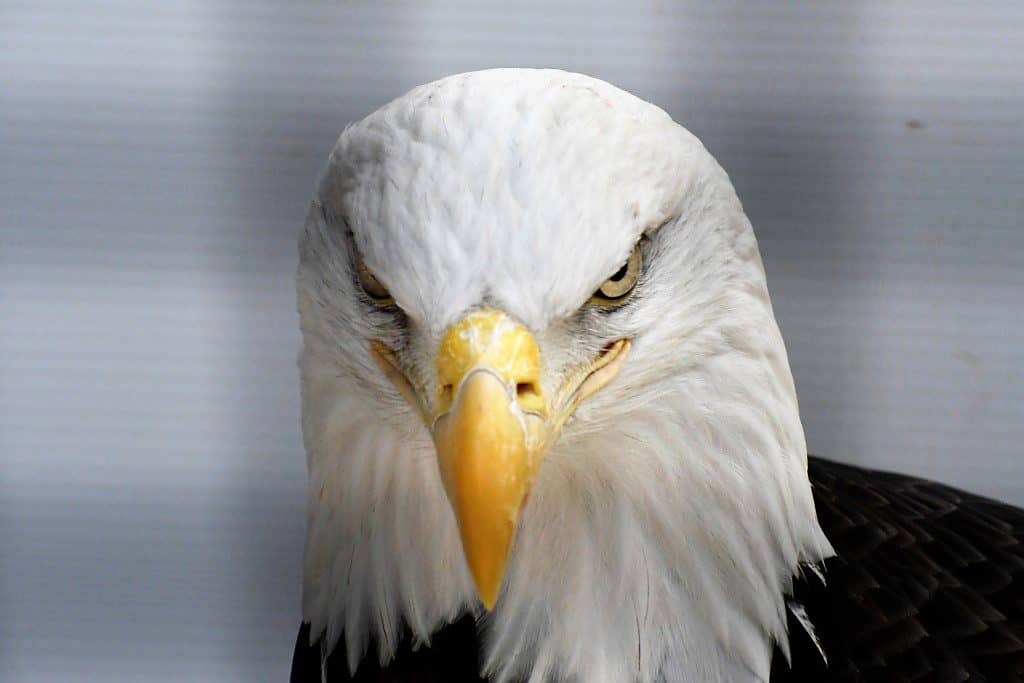
After the tour, we had the opportunity to meet with Kelsey (Interpretive Naturalist) to have a discussion about what we learned and to ask more questions. Kelsey’s enthusiasm and level of engagement with the team was contagious, the more the kids learned about different raptors, the more questions they seemed to have.
On the trip home, the kids continued to discuss the program and come up with new questions. They are already looking forward to future trips to see their favorite raptors again. TRC is definitely on our MUST see list for future trips.
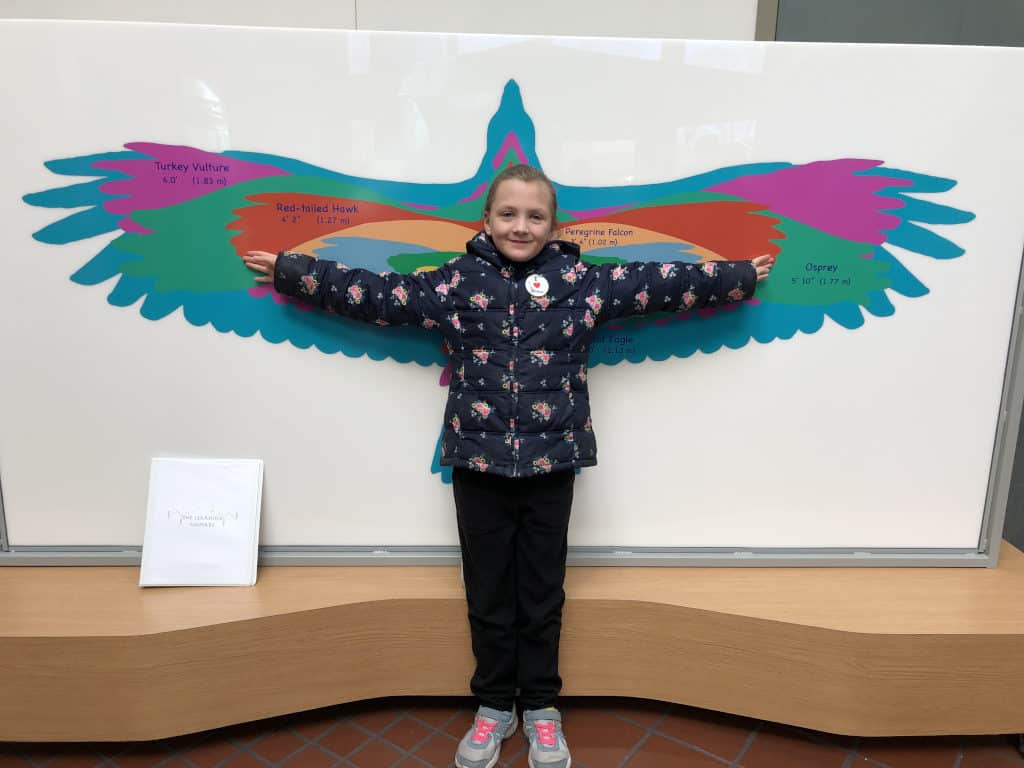
In conclusion:
We asked Kelsey (Interpretive Naturalist), what message she felt people should know about the center:
“The Raptor Center began 45 years ago to improve our ability to care for raptors in need, and from the beginning it was clear that the best way to help wild raptors was to educate people about these birds and their role in our shared environment. In addition to helping around 1000 sick and injured raptors every year, TRC also teaches over 150,000 people about the importance of raptors and how we can keep their populations healthy. It is important for everyone to know how their actions affect the world around them. By studying raptors and the issues affecting them, we can better understand what each of us can do to help.“

